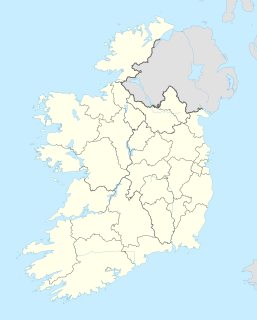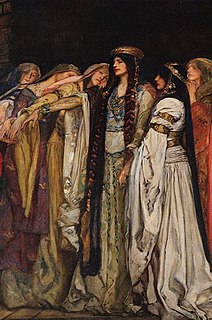 W
WIrish mythology is the mythology of the island of Ireland that has been preserved in the oral tradition, and later in the manuscripts of early Celtic Christianity. These tales and themes have continued to be developed over time in the living folklore of the country, but the main themes and characters have remained largely consistent.
 W
WOne version of the myth about the barnacle and brant geese is that these geese emerge fully-formed from goose barnacles (Cirripedia). There are other myths about how the barnacle goose breeds. The basis of all the myths is that the bird, Branta leucopsis, emerges and grows from matter other than bird eggs. There are many sources to the myth. The etymology of the term "barnacle" suggests Latin, Old English and French roots. There are few references in pre-Christian books and manuscripts – some Roman or Greek. The main vector for the myth into modern times was monastic manuscripts and in particular the Bestiary. The myth owes its long standing popularity to an early ignorance of the migration patterns of geese. Early medieval discussions of the nature of living organisms were often based on myths or genuine ignorance of what is now known about phenomena such as bird migration. It was not until the late 19th century that bird migration research showed that such geese migrate northwards to nest and breed in Greenland or northern Scandinavia.
 W
WBeltane is the Gaelic May Day festival. Most commonly it is held on 1 May, or about halfway between the spring equinox and summer solstice. Historically, it was widely observed throughout Ireland, Scotland, and the Isle of Man. In Irish the name for the festival day is Lá Bealtaine, in Scottish Gaelic Latha Bealltainn and in Manx Gaelic Laa Boaltinn/Boaldyn. It is one of the four Gaelic seasonal festivals—along with Samhain, Imbolc and Lughnasadh—and is similar to the Welsh Calan Mai.
 W
WBrasil, also known as Hy-Brasil or several other variants, is a phantom island said to lie in the Atlantic Ocean west of Ireland. Irish myths described it as cloaked in mist except for one day every seven years, when it becomes visible but still cannot be reached.
 W
WManannán or Manann, also known as Manannán mac Lir, is a warrior and king of the Otherworld in Irish mythology who is associated with the sea and often interpreted as a sea god, usually as a member of the Tuatha Dé Danann.
 W
WThe Cycles of the Kings, also known as the Kings' Cycles or the Historical Cycle are a body of Old and Middle Irish literature. They contain stories of the legendary kings of Ireland, for example Cormac mac Airt, Niall of the Nine Hostages, Éogan Mór, Conall Corc, Guaire Aidne mac Colmáin, Diarmait mac Cerbaill, Lugaid mac Con, Conn of the Hundred Battles, Lóegaire mac Néill, Crimthann mac Fidaig, and Brian Bóruma.
 W
WIt is unclear whether a form of Early Irish astrology existed prior to contact with Western astrology, as the earliest Irish language sources are simply translations from standard Western sources. Historian Peter Berresford Ellis argues that although there is evidence of the development of Irish astrology from the 7th Century AD onwards, anything earlier is left to conjecture based on continental Celtic artifacts like the Coligny calendar.
 W
WEchtra Cormaic or Echtra Cormaic i Tir Tairngiri is a tale in Irish mythology which recounts the journey of the high-king Cormac mac Airt to the Land of Promise resided by the sea-god Manannán mac Lir.
 W
WErin is a Hiberno-English word for Ireland orginating from the Irish word "Éirinn". "Éirinn" is the dative case of the Irish word for Ireland, "Éire", genitive "Éireann", the dative being used in prepositional phrases such as "go hÉirinn" "to Ireland", "in Éirinn" "in Ireland", "ó Éirinn" "from Ireland".
 W
WThe Fenian Cycle or Fiannaíocht or the Finn Cycle, also referred to as the Ossianic Cycle after its narrator Oisín, is a body of prose and verse centring on the exploits of the mythical hero Fionn mac Cumhaill and his warriors the Fianna.
 W
WFidchell or gwyddbwyll was a board game popular among the ancient Celts. The name in both Irish and Welsh is a compound translating to "wood sense"; the fact that the compound is identical in both languages suggests that the name is of extreme antiquity. The game is occasionally claimed to be a predecessor of the modern game chess. The game was played between two people who moved pieces across a board; the board shared its name with the game played upon it. The name has evolved into ficheall, the word used in Irish for modern chess; the similar gwyddbwyll is the name in Welsh for modern chess.
 W
WFintan's Grave is a mythological cave on the Irish mountain Tul Tuinde in the Arra Mountains near Lough Derg.
 W
WThe Hounds of the Morrigan is a children's novel by the Irish writer Pat O'Shea. It was published in 1985, after taking thirteen years to complete. The novel recounts the adventures of 10-year-old Pidge and his younger sister, Brigit, battling with characters from Celtic mythology.
 W
WAn immram is a class of Old Irish tales concerning a hero's sea journey to the Otherworld. Written in the Christian era and essentially Christian in aspect, they preserve elements of Irish mythology.
 W
WThe High Kings of Ireland were sometimes historical and sometimes legendary figures who had, or who are claimed to have had, lordship over the whole of the island of Ireland.
 W
WThe Irish slaves myth is a pseudohistorical narrative that conflates the penal transportation and indentured servitude of Irish people during the 17th and 18th centuries, with the hereditary chattel slavery experienced by the forebears of the African diaspora. Some white nationalists, and others who want to minimize the effects of hereditary chattel slavery on Africans and their descendants, have used this false equivalence to deny racism against African Americans or claim that African Americans are too vocal in seeking justice for historical grievances. It also can hide the facts around Irish involvement in the transatlantic slave trade. The myth has been in circulation since at least the 1990s and has been disseminated in online memes and social media debates. In 2016, academics and Irish historians wrote to condemn the myth.
 W
WThe Land of Maidens is a motif in Irish mythology and medieval literature, especially in the chivalric romance genre. The latter often also features a castle instead of an island, sometimes known as the Castle of Maidens.
 W
WThe Lia Fáil is a stone at the Inauguration Mound on the Hill of Tara in County Meath, Ireland, which served as the coronation stone for the High Kings of Ireland. It is also known as the Coronation Stone of Tara. According to legend, all of the kings of Ireland were crowned on the stone up to Muirchertach mac Ercae, c. AD 500.
 W
WLughnasadh or Lughnasa is a Gaelic festival marking the beginning of the harvest season. Historically, it was widely observed throughout Ireland, Scotland and the Isle of Man. In Modern Irish it is called Lúnasa, in Scottish Gaelic: Lùnastal, and in Manx: Luanistyn. Traditionally it is held on 1 August, or about halfway between the summer solstice and autumn equinox. In recent centuries some of the celebrations have been shifted to the Sunday nearest this date.
 W
WThe Mythological Cycle is a conventional division within Irish mythology, concerning a set of tales about the god-like peoples said to have arrived in five migratory invasions into Ireland and principally recounting the doings of the Tuatha Dé Danann. It is one of the four major cycles of early Irish literary tradition, the others being the Ulster Cycle, the Fenian Cycle and the Cycles of the Kings.
 W
WThe Silver Branch or Silver Bough is a symbol found in Irish mythology and literature.
 W
WThe Hill of Uisneach or Ushnagh is a hill and ancient ceremonial site in the barony of Rathconrath in County Westmeath, Ireland. It is a protected national monument. It consists of numerous monuments and earthworks—prehistoric and medieval—including a probable megalithic tomb, burial mounds, enclosures, standing stones, holy wells and a medieval road. Uisneach is near the geographical centre of Ireland, and in Irish mythology it is deemed to be the symbolic and sacred centre of the island. It was said to be the burial place of the mythical Tuatha Dé Danann, and a place of assembly associated with the druids and the festival of Bealtaine.
 W
WThe legendary werewolves of Ossory, a kingdom of early medieval Ireland, are the subject of a number of accounts in medieval Irish, English and Norse works. The werewolves were said to have been the descendants of a legendary figure named Laignech Fáelad whose line gave rise to the kings of Ossory. The legends may have derived from the activities of warriors in ancient Ireland who were the subject of frequent literary comparisons to wolves, and who may have adopted lupine hairstyles or worn wolf-skins while they "went wolfing" and carried out raids.